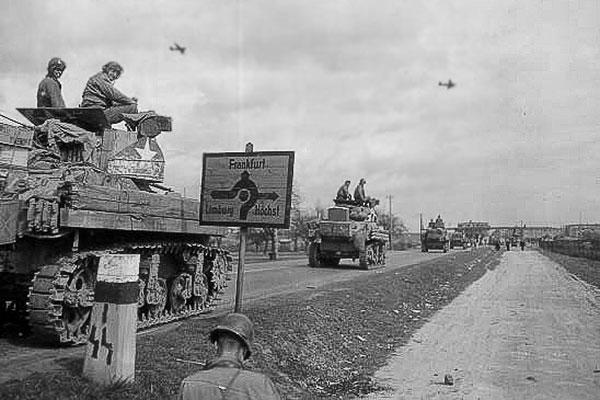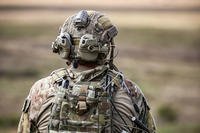The race was unofficial, its participants men in late middle age, but its outcome would change the course of a war. On Aug. 17, 1943, Lt. Gen. George S. Patton Jr. and his Seventh Army beat British Field Marshal Bernard L. Montgomery and his Eighth Army to Messina, Italy, where the two armies joined forces in the Allied conquest of Sicily. Patton became famous for outcommanding his venerable colleague during the operation.
But Patton was famous throughout his career for being outspoken and even outlandish. From his 1912 pentathlete status at the Stockholm Olympics to his ivory-handled pistols to the uniform he designed himself, everything about this 1909 graduate of the U.S. Military Academy was emphatic, and often flamboyant. During World War I, he served on Gen. John J. Pershing's staff and was wounded at the Meuse-Argonne offensive. "Compared to war," he later declared, "all other forms of human endeavor shrink to insignificance."
Between the wars, Patton developed and refined his own brand of military thought, grounded in the importance of mechanized cavalry, or armor. After graduating with distinction from the Army War College, Patton served as the control officer for maneuvers that tested the concept of a mechanized army. At the outbreak of World War II, he was named commanding general of the 2nd Armored Division.
Patton distinguished himself as leader of the Western Task Force that led the invasion of French North Africa in November 1942, and again during the invasion of Sicily. There, however, his fame was marred by an incident in which he accused a hospital patient suffering from shell shock of cowardice; Patton slapped the man across the face. He made a public apology for the blunder after a reprimand from his superior, Gen. Dwight D. Eisenhower.
Whatever reservations Eisenhower had about Patton's character, he knew that his military prowess was necessary for the invasion of France. In December 1944, it was Patton who brought the Third Army dashing across Europe. As they prepared an attack eastward, the Germans launched a counteroffensive in the Ardennes. Patton turned his forces northward and contained the enemy in a maneuver Gen. Omar Bradley called "one of the most astonishing feats of generalship of our campaign in the west."
Less than a year after V-E Day, the astonishing and much-decorated Patton was killed in an automobile accident in Germany; he is buried at Hamm, Luxembourg, among the soldiers killed in the Battle of the Bulge.
Related links:
















